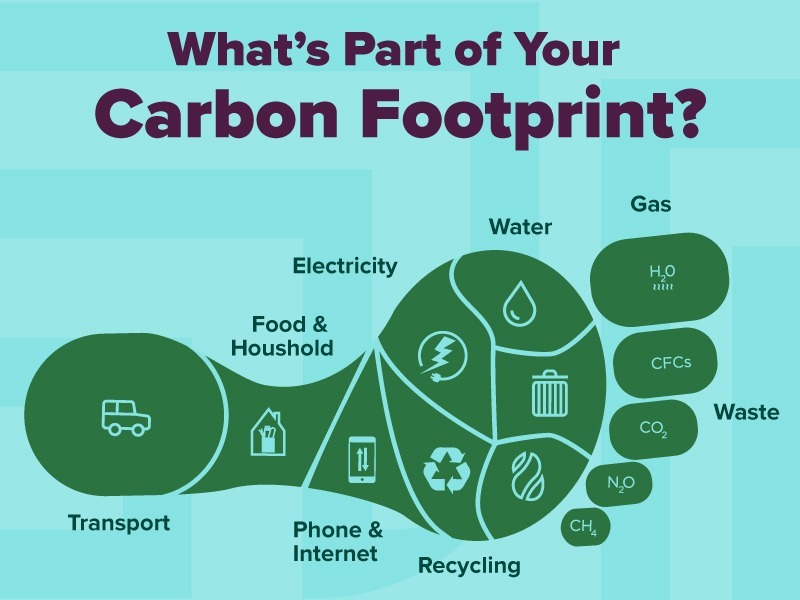What Is a Carbon Footprint?
The short answer: A “carbon footprint” is shorthand for all of a person or organization’s greenhouse gas emissions that contribute to climate change.
- Your carbon footprint includes emissions from work, home, transportation, and daily life.
- It includes greenhouse gases from burning fossil fuels like gasoline, using energy like natural gas, and the gases emitted over the life of the products you buy.
- Your footprint counts more than just carbon. Other greenhouse gases like nitrous oxide, methane, and chlorofluorocarbons (CFCs) count toward your carbon footprint, too. These gases also add to the “greenhouse effect” in the atmosphere.
- But it’s not just people who have carbon footprints—organizations and companies tally their total carbon footprint, too.

An illustrated image of a foot contains components of a person or organizations carbon footprint, including transport, food & household, electricity, phone & internet, water, recycling, greenhouse gases, and waste emissions.
Break it down: Your carbon footprint includes both direct and indirect greenhouse gas emissions.
- Direct emissions include activities that burn fuel, like driving your car, using a gas stove, or burning wood.
- Indirect emissions include those created by generating electricity or the greenhouse gases from manufacturing goods you purchase and use. It includes the packaging and waste created by those goods. Plus, getting products to you requires transportation. Shipping items from place to place is another big source of greenhouse gas emissions.
So what can you do? Consider finding ways to use less fuel—decrease time spent driving, if possible. Reducing consumption is another good way to shrink your carbon footprint. If you buy or use less, you’ll emit less! And finding ways to reuse or recycle what you can will also help.
- If you’re a corporation or institution, tracking your carbon footprint will likely be a big component of your emissions reduction strategy. Most entities classify their emissions across their supply chain as Scope 1, 2, or 3 emissions. This can help track both emissions and opportunities to reduce them or purchase credits to help offset them.
- If you’re a land owner or land manager, finding ways to help sequester carbon through forestry projects or regenerative agriculture practices could be another way to help reduce your carbon footprint.
- If you’re curious about the size of your personal carbon footprint, try out the TiCO2e Carbon Calculator. You can figure out your emissions from travel or from your day-to-day general living. There are even built-in opportunities to offset your personal emissions through projects created by the National Indian Carbon Coalition.
All in all, keeping track of emissions at both the personal and organizational scale means we can take steps to decrease them!
Photo by Kelly Sikkema on Unsplash.








